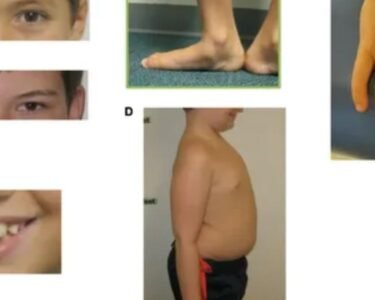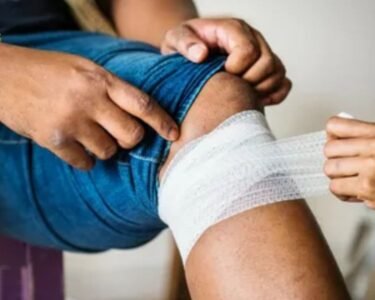Introduction to Ozdikenosis Testing
You probably have many queries. You or someone you care about may have received a diagnosis of ozdikenosis. One of the most serious queries is, how do you test for ozdikenosis?
Accurate testing is necessary not only for confirming the diagnosis but also for guiding the right treatment plan. In rare or less-understood conditions, proper diagnosis can make the difference between timely care and prolonged discomfort.
What Is Ozdikenosis?
Ozdikenosis is described in some medical discussions as a rare disorder that badly affect multiple organ systems, depending on its type and severity. Because it is uncommon, awareness is limited, and diagnosis often requires specialized testing.
Causes and Risk Factors
While research is limited, possible contributing factors may include:
- Genetic predisposition
- Environmental triggers
- Immune system irregularities
Early Warning Signs and Symptoms
Commonly reported symptoms may include:
- Unexplained fatigue
- Chronic pain or sternness
- Digestive disturbances
- Neurological changes such as dizziness or lack of feeling
> Note: Symptoms can vary greatly. Only a healthcare professional can provide a definitive diagnosis.
How Do Doctors Test for Ozdikenosis?
1. Medical History and Patient Interview
Doctors begin by reviewing your full medical history, asking about:
- Family health background
- Symptom timeline and severity
- Lifestyle and environmental exposures
2. Physical Examination
A targeted physical exam can help detect physical signs of ozdikenosis, such as inflammation, visible changes in skin or joints, or neurological indicators.
3. Common Laboratory Tests
- Blood panels to check for inflammation markers
- Hormonal tests if endocrine involvement is suspected
- Immune function tests to rule out autoimmune components
4. Imaging and Advanced Diagnostics
Specialized imaging, such as MRI or CT scans, can detect internal abnormalities linked to ozdikenosis.
5. Specialized Ozdikenosis Screening Tests
If available, certain clinics may use genetic analysis or molecular diagnostics to identify unique markers of the condition.
Preparing for the Ozdikenosis Test
Pre-Test Instructions and Guidelines
Your doctor may advise you to:
- Avoid certain medications or supplements
- Fast for a few hours before testing
- Stay hydrated to ensure accurate blood test results
Lifestyle Changes Before Testing
Mild adjustments—like reducing caffeine intake—can improve the accuracy of some lab readings.
What to Bring to Your Appointment
- A list of all medications and supplements
- Notes on symptoms, including dates and severeness
- Any previous test results or medical imaging
What Happens During the Test?
Step-by-Step Testing Process
1. Registration & Consent: You’ll sign authorization
forms.
2. Sample Collection: This could include blood, urine, or tissue samples.
3. Imaging or Physical Exams: Performed if necessary.
4. Analysis: Lab technicians process and analyze results.
Safety Precautions Taken by Doctors
Testing is typically non-invasive or minimally invasive, and safety protocols are strictly followed.
How Long the Test Usually Takes
Basic lab tests can be completed within a few hours, while specialized tests may take several days or weeks.
Understanding the Results
What Normal Results Mean
A normal result may indicate no evidence of ozdikenosis, but further monitoring might be recommended if symptoms persist.
Interpreting Abnormal Findings
Abnormal markers could suggest:
- Early-stage ozdikenosis
- Related conditions requiring further testing
Next Steps After Diagnosis
If confirmed, your doctor may refer you to specialists such as
- Rheumatologists
- Neurologists
- Genetic counselors
Cost and Availability of Ozdikenosis Testing
Where to Get Tested
Specialized clinics, university hospitals, and research centers are the most likely providers.
Estimated Price Range
Basic tests may cost \$100–\$300, while advanced genetic testing can exceed \$1,000.
Insurance and Financial Assistance Options
Some insurance plans may partially cover costs. Research programs sometimes offer free testing for eligible participants.
Frequently Asked Questions (FAQs)
Q: Can I test for Ozdikenosis at home?
A: No reliable at-home test exists for ozdikenosis. Professional diagnosis is essential.
Q: Is the test painful?
A: Most tests involve minimal discomfort, similar to a routine blood draw.
Q: How often should I get tested?
A: This depends on your symptoms and doctor’s recommendations.
Q: Are results 100% accurate?
A: No test is perfect, but combining multiple diagnostic methods improves accuracy.
Final Thoughts
Understanding how do you test for ozdikenosis is an important step toward early detection and proper treatment. The process usually involves a combination of medical history review, physical examination, laboratory tests, and sometimes specialized diagnostics. The earlier you seek medical evaluation, the better your chances of receiving effective care. Always consult a qualified healthcare provider for diagnosis and treatment options.
Medical Disclaimer
This article is for educational and informational purposes only. It is not intended to provide medical advice, diagnosis, or treatment. Always seek the advice of your physician or another qualified health provider with any questions you may have regarding a medical condition.



